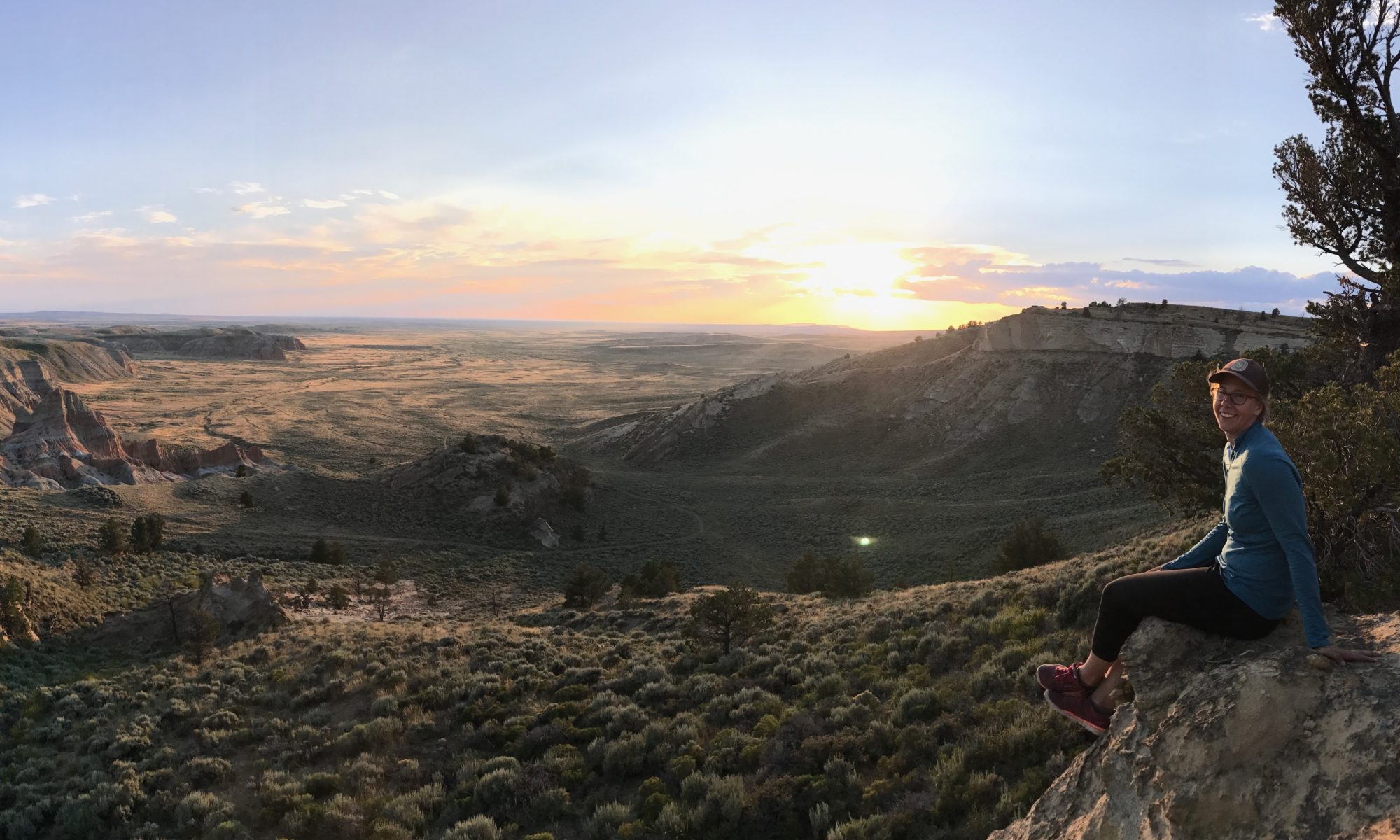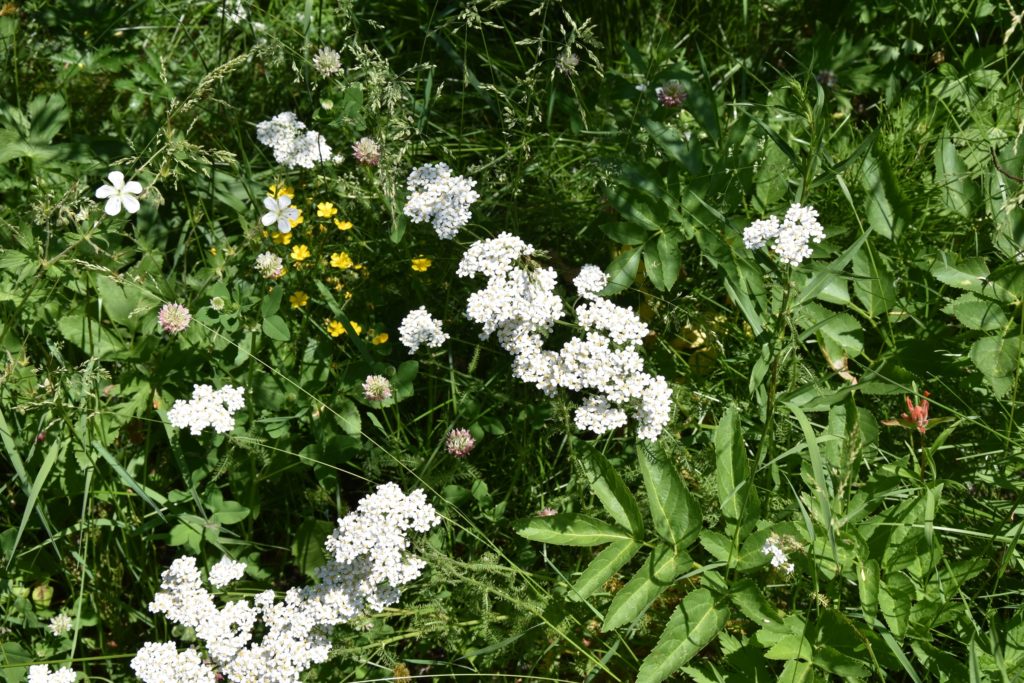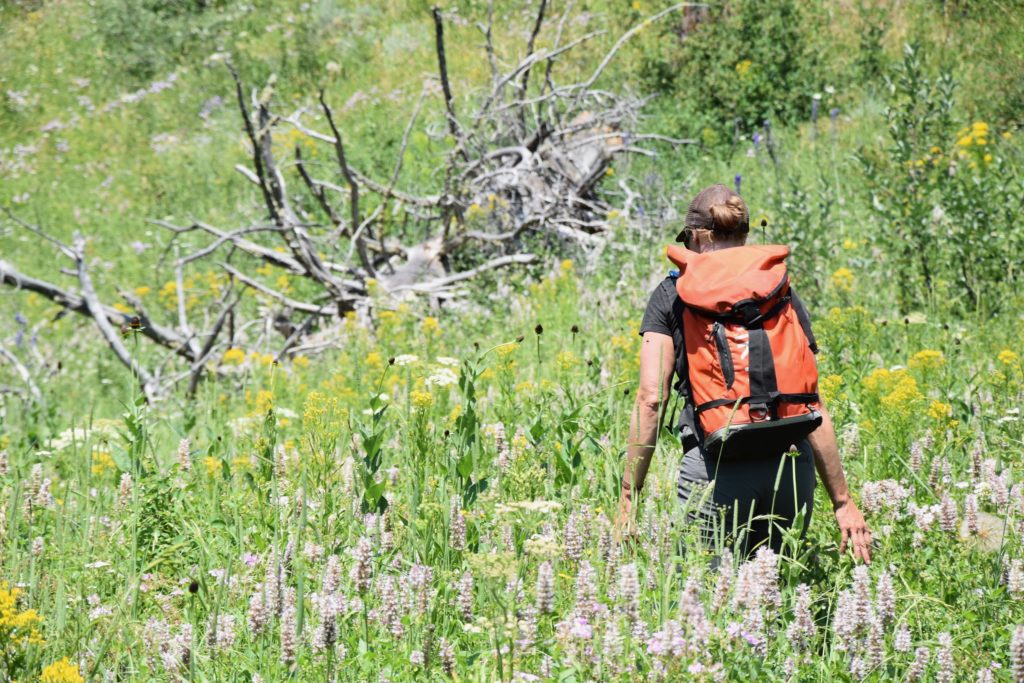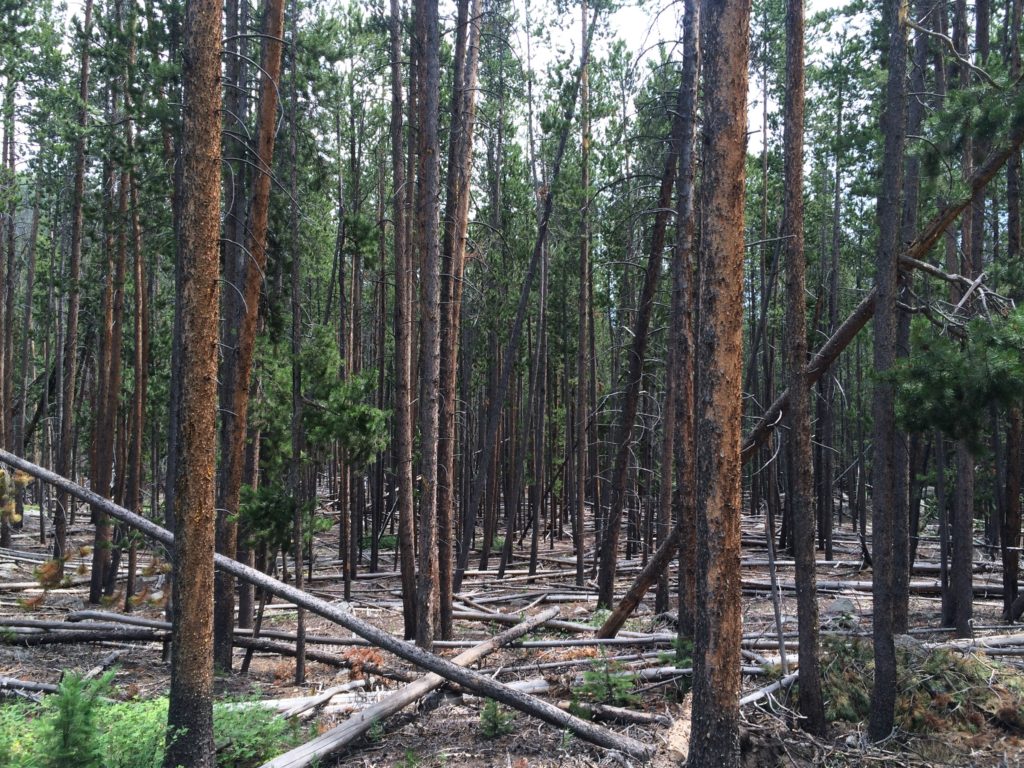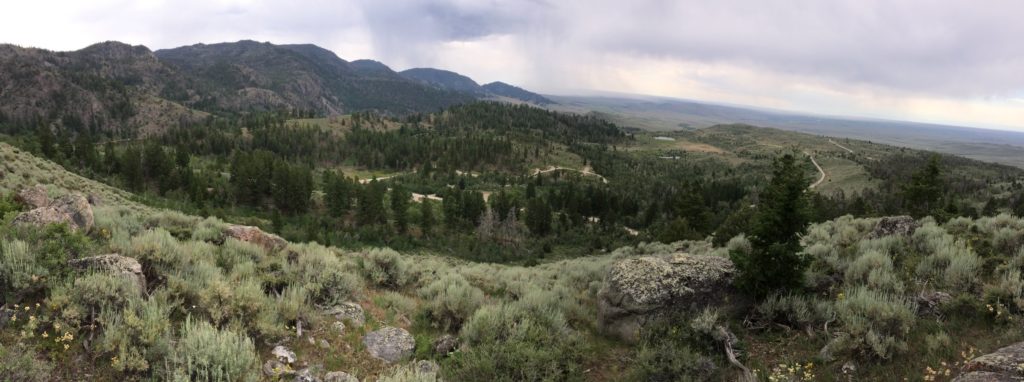
We came clattering into Jackson, Wyoming after banging down a washboard road that passes Lower and Upper Red Rock Lake, and then over Red Rock Pass, a Continental Divide. Coming in from the West gives you an incredible view of the Tetons. We were lucky to have Sam’s good family friends in Jackson and they had a great wood shop that let us give Flicker some TLC. After some days of trailer repair, our friend invited us for a sail on Jackson Lake in Grand Teton National Park. It was a refreshing break before we headed to our first of three Wyoming Wilderness Study Areas (WSAs).
Wyoming is engaged in a collaborative process in which stakeholders are assessing the state’s WSAs and trying to reach agreement on areas that should be released (opened to multiple use management) and areas that should be recommended as Wilderness to be (hopefully) designated by Congress and permanently protected. No wilderness areas have been designated in Wyoming in the last 30 years.

Our first WSAs was the Palisades. The area is in the Snake River Range and is located just outside of Jackson. In a 2008 assessment of the Bridger Teton National Forest, the Palisades was ranked 12 out of 12 for wilderness potential (solitude and wildness abound). We explored two beautiful drainages (Wolf Creek and Cabin Creek). Both trails follow creeks to great viewpoints. The Palisades WSA is a popular recreation area and has faced increasing pressure by motorized recreation (mountain bikes, heli-skiers, and snowmobiles). These user groups generally oppose a wilderness designation because it would close the area to motorized use.
From Palisades we drove south to the Scab Creek WSA. The WSA is located just outside of Pinedale and connects with the Bridger-Teton National Forest in the Wind River Range. The BLM maintains the Scab Creek Trailhead which provides a great hiking/backpacking entrance into the Wind River Range. We hiked to a beautiful mountain lake, Little Divide Lake, located just on the other side of the WSA boundary. Sam went for a quick dip and tiny cliff jump and then we ran back to the trail. The mosquitos were aggressive at Scab Creek! The WSA was spectacular with huge granite rocks, clear mountain lakes and great views.
Our last stop in Wyoming was the trio of WSAs in the Northern Red Desert: Whitehorse Creek, Oregon Butte and Honeycombs WSAs. The Red Desert is an incredibly scenic high altitude desert in central Wyoming with a great variety of wildlife including rare desert elk and a pronghorn antelope herd that migrates to Grand Teton National Park. If you’re driving to Pinedale on Hwy 191, keep an eye out for very tall fences and wildlife overpasses. These were installed to decrease traffic accidents with the migrating wildlife. There’s a soon to be released book on the antelope, elk and mule deer migrations in the area called “Yellowstone Migrations.”
We camped at a great spot overlooking the Whitehorse Creek WSA. After getting settled, we scrambled down into the canyon and caught a wonderful sunset. The next day we drove into Oregon Buttes and made the short but steep climb up Oregon Butte North. From there we had a panoramic view of the whole area. Its vast openness was astounding.
Unfortunately, due to the area’s significant oil and gas resources, the Red Desert has been aggressively developed for fossil fuel. These development pressures make preserving the remaining undeveloped and roadless areas even more essential. I only wished we had had more time to explore. It looks like there is much more magic to be found in Wyoming’s Red Desert.
We give a shout out to Wyoming Outdoor Council for working to protect Wyoming’s public lands.
